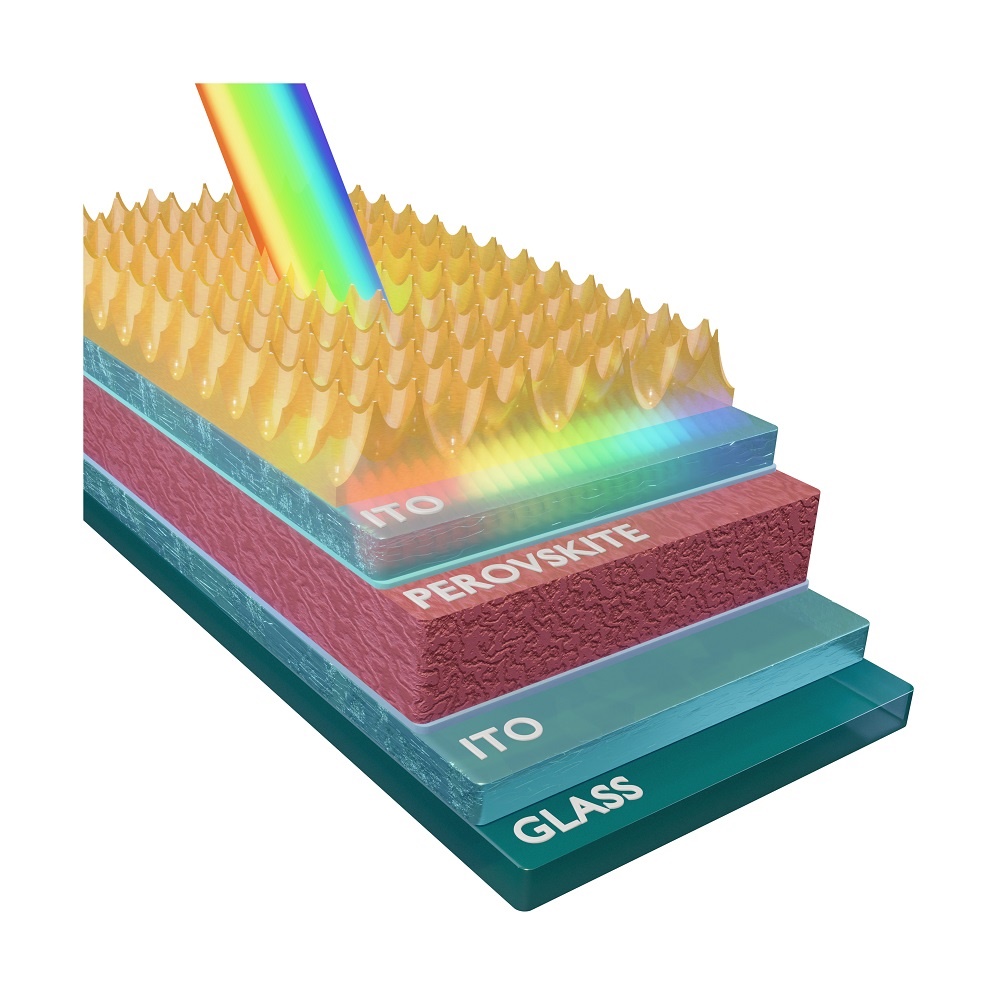
A team of researchers from the Faculty of Physics at the University of Warsaw (UW) and the Fraunhofer Institute for Solar Energy in Freiburg has presented perovskite photovoltaic cells with significantly improved anti-reflection properties. The results of their research have been published in the journal Advanced Materials and Interfaces.
The most commonly used material for photovoltaic panels is silicon, whose performance is limited. Researchers are working on other solutions that will increase the efficiency of the cells on the one hand and enable cheaper and more environmentally friendly production on the other.
Perovskite-based cells meet both criteria.
To increase the amount of current generated by perovskite photovoltaic panels, efficient, anti-reflection structures with honeycomb symmetry have been created on their surface. Researchers from Poland and Germany used the nanoimprinting method. This technique makes it possible to create nanometre-sized structures on very large surfaces, even over 100 cm².
Read more:









